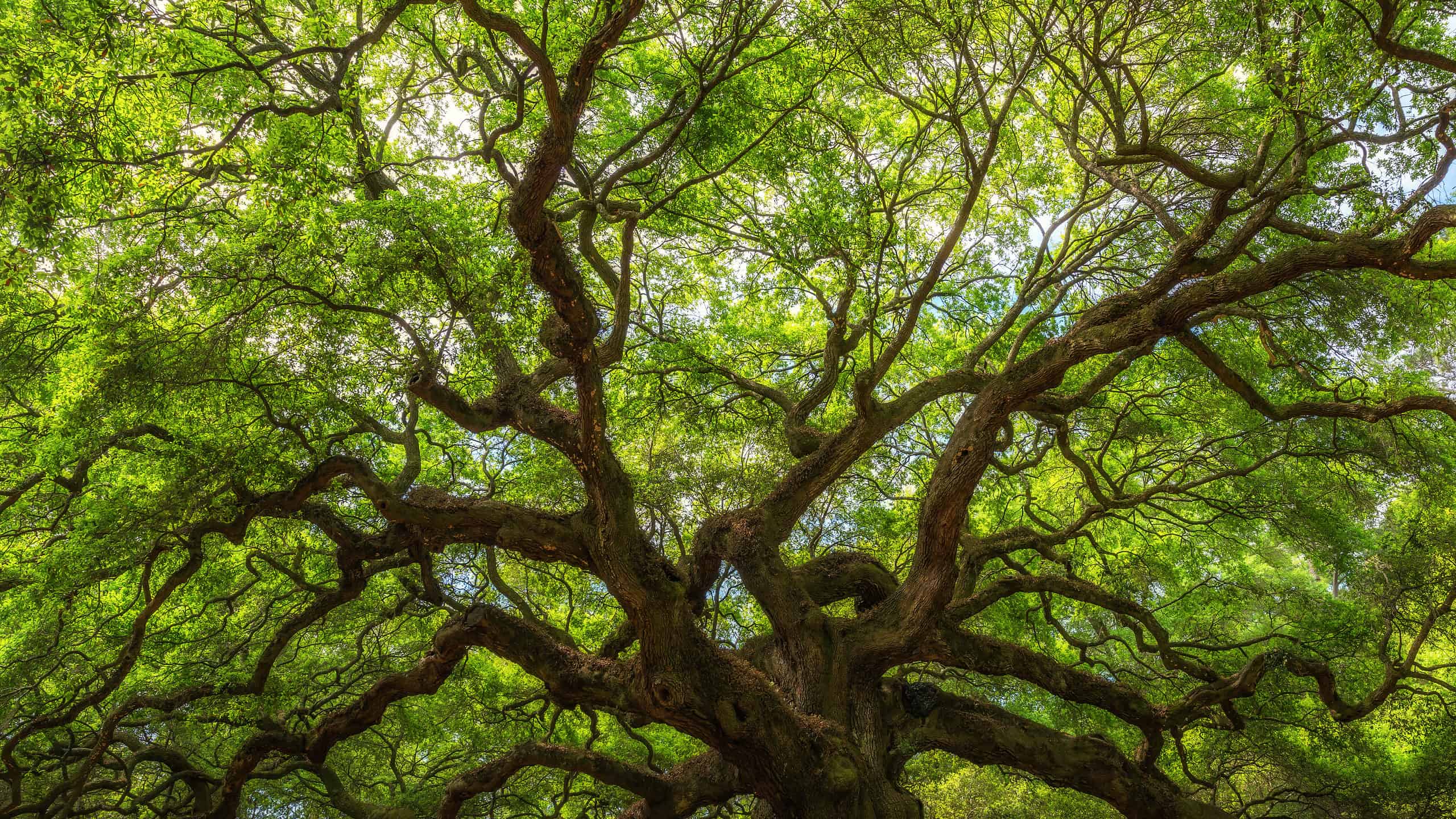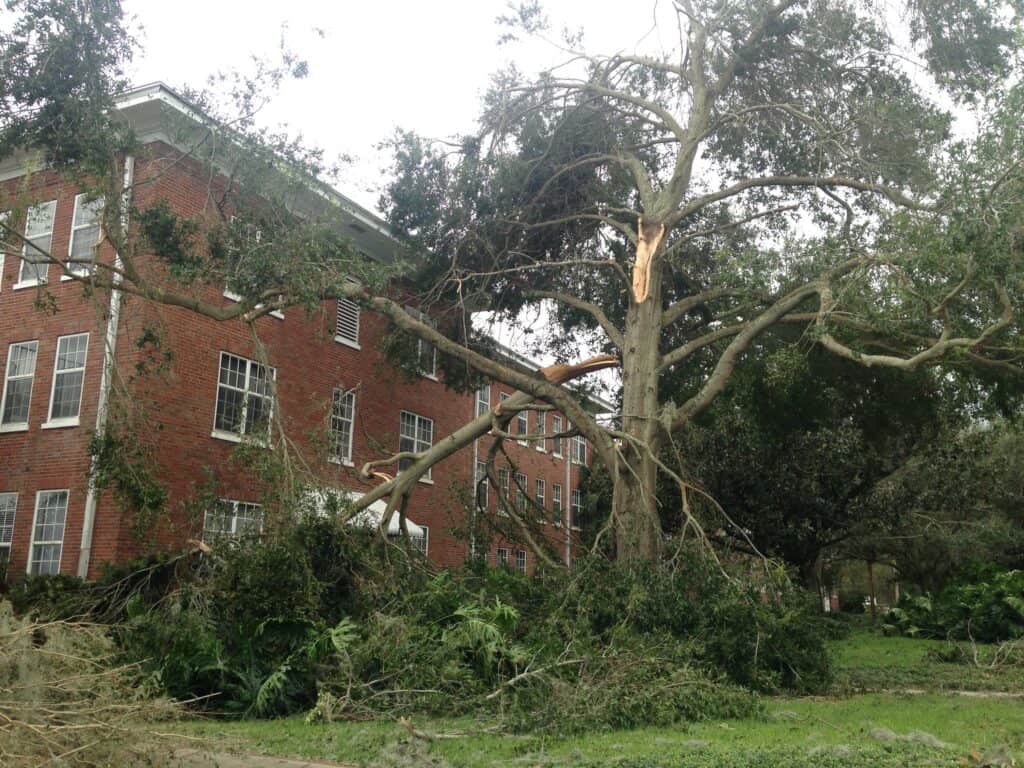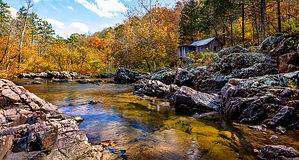There are over 400 kinds of oak trees on Earth, and about 90 of those grow in the United States. They’re undeniably beautiful but they sometimes aren’t a good choice when planting trees on your property. We’ll go over 11 reasons to avoid planting an oak tree in your yard so you understand the drawbacks.
1. Oak Trees Will Damage Buildings

Oak trees need to be at least 20 feet away from any structure to avoid damage.
©Jon Bilous/Shutterstock.com
At a minimum, oak trees need to be at least 20 feet away from any building. However, well over 50 feet of clearance around an oak tree is recommended. That’s because their branches can spread out over large distances, and their branches shouldn’t be over anything of value that may get damaged if they break.
Oak trees also have roots that won’t stop growing just because they butt up against concrete like other trees. As a result, they easily damage the foundations of houses and ruin basements.
2. Oak Trees Damage Public Spaces Like Sidewalks and Roads
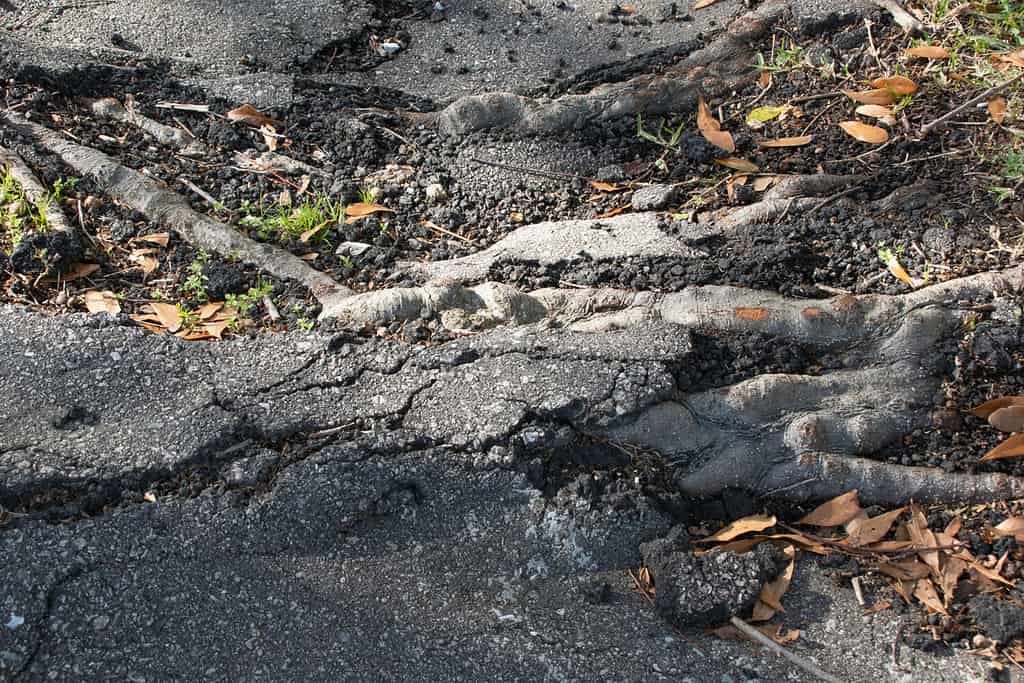
Roots from oak trees rip up roads and sidewalks over time.
©Charles Wayne Lytton/Shutterstock.com
Oak tree roots are strong, and they grow fast. They also spread out as well as growing deep. As a consequence, they will uproot roads and sidewalks in their way while also damaging swimming pools and decks.
3. Avoiding Structures When Felling a Large Oak Is Difficult
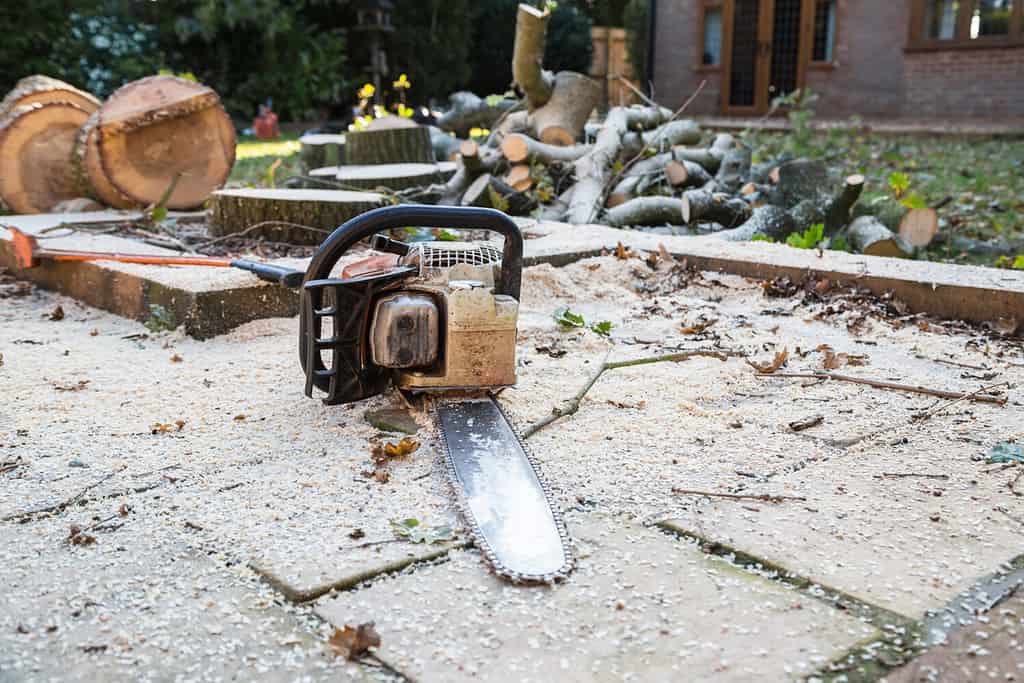
Felling a large oak tree in residential areas is dangerous.
©Christine Bird/Shutterstock.com
Since oak trees grow to immense sizes, removing one in a residential area can be dangerous. That’s because they require a lot of space to fall when they are cut down. Since they’re so huge, it’s hard for arborists to predict where the tree will land which puts people and property in danger.
4. Oak Trees Are a Wildlife Haven
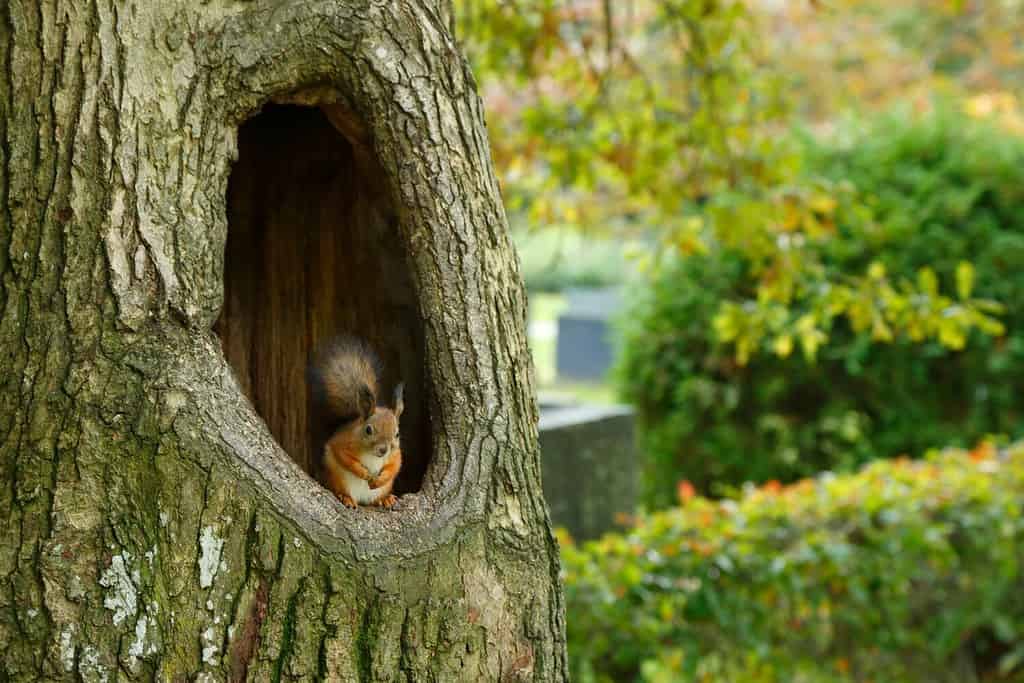
Wildlife are attracted to oak trees.
©Antero Aaltonen/Shutterstock.com
Oak trees attract a lot of wildlife for both seasonal and permanent habitation. While this is great in wild landscapes, it can be a nuisance in neighborhoods. They readily attract animals like frogs, squirrels, snakes, raccoons, birds, chipmunks, opossums, rodents, foxes, and deer.
5. Oak Trees Purposefully Stunt Other Plant Growth
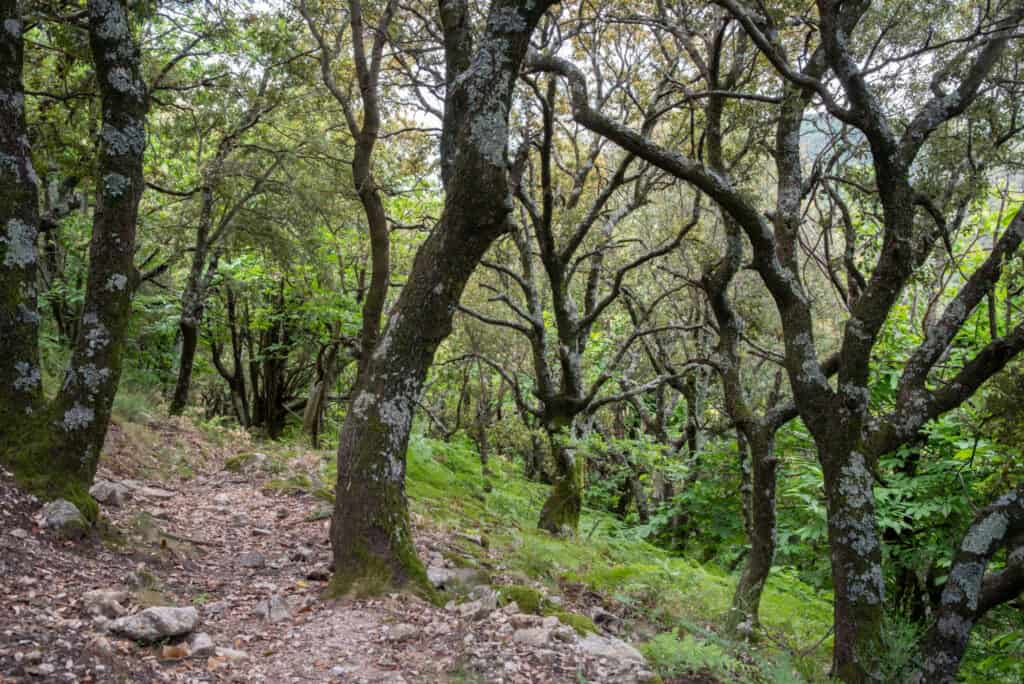
Plant growth is stunted by oak trees.
©FaRifo/Shutterstock.com
Oak trees release substances into the soil which purposefully stunts the growth of other plants near it. This survival technique is called allelopathy. The tree is releasing these chemicals to kill its competition for space, nutrients, and light.
6. The Large Canopy of an Oak Tree Prevents Other Gardening

Azaleas are one of the few plants that do well under oak trees.
©Cvandyke/Shutterstock.com
Oak trees slowly get tall and wide. This means they develop a sprawling canopy that some people like because it keeps their homes cool. However, avid gardeners will find this shade overwhelming as it limits what they’re able to plant in their yards.
Anything you plant under an oak tree will need to survive without much irrigation. That’s because oak trees are adapted to wet winters with dry summers. Without a hot and dry period, an oak tree is prone to fungal diseases.
Despite these limitations, some plants might do well under an oak tree. These include creeping sage, coral bells, California irises, and wild lilacs.
Oak trees create a dripline much like an umbrella at the edge of its branch circumference. Here, some other plant varieties may fare well. These plants include azaleas, manzanitas, and creeping mahonias.
7. Oak Trees Lose Big Limbs During Storms
If oak trees aren’t pruned correctly and often when young, they will grow branches that are heavy and break easily. Even if pruned correctly, there is no guarantee that an older oak won’t develop a branch that is much too heavy for the tree to support. As a consequence, when bad storms roll through, the damage potential of a fallen oak limb can be higher than with other tree varieties.
8. Grass and Oak Trees Don’t Mix

The shade that oak trees create isn’t conducive to a healthy lawn.
©iStock.com/Michael Ver Sprill
Grass doesn’t grow well near oak trees. That’s because oak trees create an abundance of shade, and they’re allelopathic which inhibits grass growth. This means that photosynthesis is more difficult, and there aren’t enough nutrients in the soil to encourage healthy grass.
Most grasses need a lot of sunlight to thrive. Fescue varieties and rough stalk bluegrass may do well under an oak tree as they’re tolerant of moderate shade. Make sure that you leave 2 to 3 inches of grass when you clip it so the grass stands more of a chance of photosynthesizing properly.
Any grass you put under an oak tree cannot be watered regularly. If you water anything growing under an oak with regularity, especially during the dry season, you risk giving the tree a root fungus. This will quickly kill your oak tree.
9. Oaks Lose Lots of Leaves

Oak trees lose a lot of leaves that clog drains, filters, and gutters.
©Ole Schoener/Shutterstock.com
Oak trees lose a lot of leaves during the Fall. As a result, they make a mess of anything around it including roofs, pools, decks, and yards. They readily clog filters, gutters, and drains you may have on your property.
10. Oak Tree Acorns Are a Nuisance

Acorns are a messy nuisance that can cause injury or property damage.
©iStock.com/EIBrubaker
Acorns are the hard fruit that oak trees produce in autumn. These trees can drop over 1000 acorns in a month, and since they live a long time, one tree can drop over a million acorns in its life.
On top of being a pain to clean up, acorns cause slip hazards. Acorns are also able to dent cars and break windshields when they fall from the top of the tree.
11. Composting Oak Leaves Is Hard
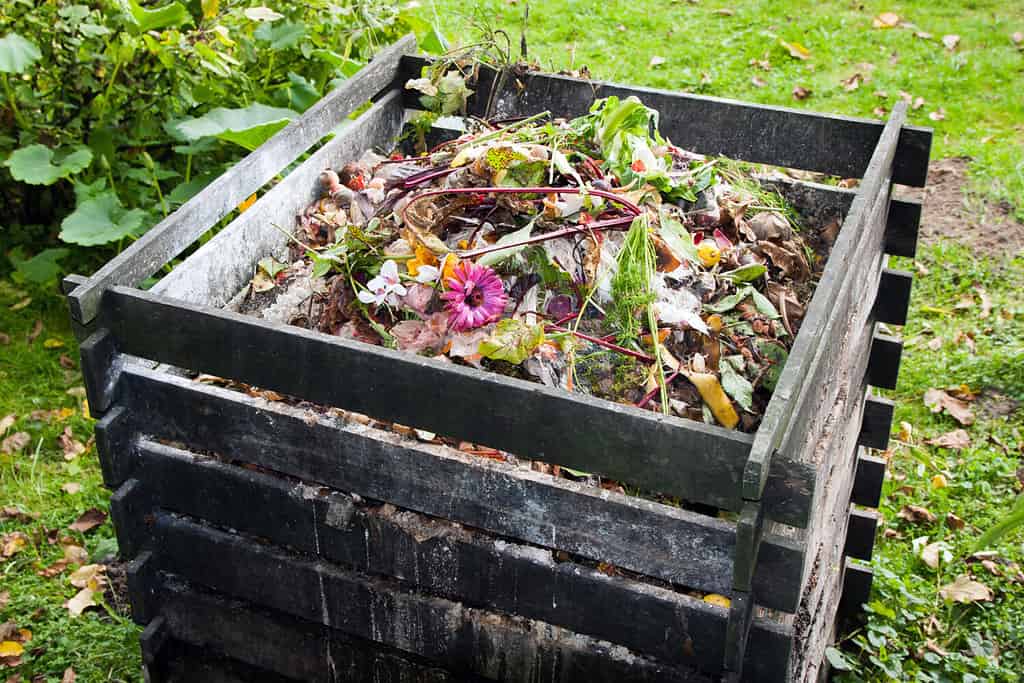
Composting oak leaves can be difficult as they don’t break down easily.
©Evan Lorne/Shutterstock.com
Oak leaves don’t make great compost. That’s because it takes a few years for oak leaves to fully decompose naturally which is caused by the tannins that they contain.
They should also be shredded as they clump together, and this adds an extra step to composting projects that most people don’t want. However, shredding does open the leaves up to bacterial and fungal decomposition. This does make shredding a useful hack if you have lots of oak leaves for your compost pile.
| Reasons to Avoid Planting an Oak Tree in Your Yard | |
|---|---|
| 1 | Oak trees will damage buildings. |
| 2 | Oak trees damage public spaces like sidewalks and roads. |
| 3 | Avoiding structures when felling a large oak is difficult. |
| 4 | Oak trees are a wildlife haven. |
| 5 | Oak trees purposefully stunt other plant growth. |
| 6 | The large canopy of an oak tree prevents other gardening. |
| 7 | Oak trees lose big limbs during storms. |
| 8 | Grass and oak trees don’t mix. |
| 9 | Oaks lose lots of leaves. |
| 10 | Acorns from oak trees are a nuisance. |
| 11 | Composting oak leaves is hard. |
Thank you for reading! Have some feedback for us? Contact the AZ Animals editorial team.

